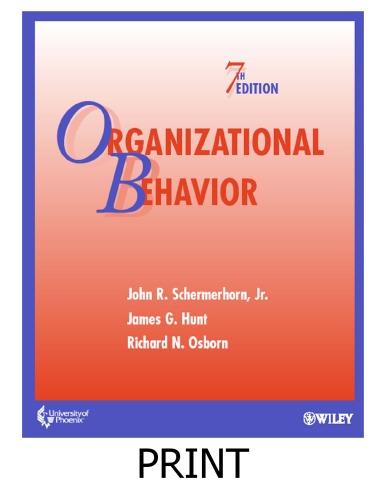As one of the major air carriers in the United States, American Airlines conducts thousands of flights
Question:
As one of the major air carriers in the United States, American Airlines conducts thousands of flights daily. After years of operations under Chairman Robert Crandall, Donald Carty took over in May of 1998. One of his first strategic moves was to complete the acquisition of the small, Southwestern, low-fare regional carrier, Reno Air. As a result of this action, in February 1999, the American Airlines pilots chose to conduct an unauthorized work slowdown, with over 1000 pilots calling in sick. This action served to effectively cripple American’s ability to carry out operations at a loss to the carrier of over \($150\) million. How did the conflict between American and its pilots escalate to this level?
The modern era in the U.S. airline industry can be traced to 1978, with the deregulation of the United States’ airline industry. Previous to 1978, major airlines had been regulated by the Federal Aviation Administration (FAA) and the Civil Aeronautics Board (CAB) essentially as a government-sponsored oligopoly. Competition was minimized, and entry into the airline industry was difficult, if not impossible. With deregulation, small, low-fare airlines sprang up in many markets, putting severe pressure on the operating profits of the older operators. The flying public benefited with improved service and lower fares, but the established airlines, with their higher operating costs, suffered.
• Majors—The majors are airlines whose revenues exceed \($1\) billion annually. They generally operate international and domestic flights and service only major airports.
The majors are characterized as long haul carriers.
• Nationals—National airlines are short-haul carriers. Their revenues generally are between \($100\) million and \($1\) billion. They fly shorter point-to-point flights that may include a few international flights.
• Regionals—Regionals generally make less than \($100\) million annually. They concentrate in certain areas of the U.S. and only service that area. They do not usually use large jets, so their capacity is smaller but it allows them to access smaller rural airports that aren’t available to the larger carriers.
The following is a listing of the top 10 passenger carriers:
Robert Crandall at American Airlines introduced the AAdvantage frequent flier program in 1980, now an industry standard. Intense pressure to slash prices (often to below cost), due to rising energy costs brought on by Gulf War sanctions, an economic recession, and corporate cost-saving measures that forced many business travelers out of first class and into coach led to unprecedented losses for the airlines. Between 1990 and 1992, airline industry losses of over \($5\) billion exceeded the combined profits for the previous 67 years.2 As a result of these losses, airline management pressured various unions representing pilots, flight attendants, and mechanics to agree to labor concessions. With the latter half of the 1990s providing very attractive profits for airlines, these unions are now becoming more and more aggressive to win back previous wages and benefits.
Employee salaries (consisting of cabin attendants, ground crews, and flight crews) represent 36 per cent of the operating costs for the airline industry. The next largest contributor is ticketing and promotional costs with 17 percent. Finally, fuel costs take 11.7 percent of the expense category. Net income is greatly affected by the fluctuations of these operating costs. Because operating expenses are controlled mainly by volatile forces, the net income of the industry is too dependent on factors outside of its control.
As a result, airlines are looking for innovative ways to control costs, including ticketless travel, Internet sites, lowering or even eliminating travel agents commissions, application of new technology, extensive use of hub-and-spoke traffic systems, code sharing, and alliances. At the same time, labor disputes, including a pilot strike at Northwest in 1998, a narrowly averted flight attendant strike at America West in early 1999, and the American Airlines pilot “sickout” all represent troubling times for airline passengers.
Review Questions
1. Discuss the situation at American Airlines in regard to the stages of conflict the author presents.
2. Analyze possible conflict resolution methods using the direct conflict management techniques discussed in the chapter.
3. Suggest possible distributive or integrative negotiation approaches available to the two parties in the American dispute.
Step by Step Answer:

Organizational Behavior
ISBN: 9780470076255
7th Edition
Authors: John Schermerhorn, James G. Hunt, Richard N. Osborn





